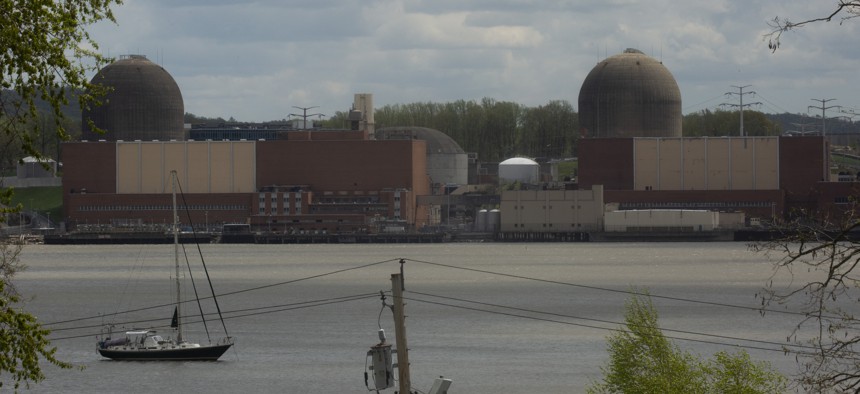Personality
Legislative victory: Blocking radioactive wastewater from being dumped in the Hudson River
A Q&A with state Sen. Pete Harckham on decommissioning the Indian Point nuclear power plant.

The Indian Point nuclear power plant is currently going through the decommissioning process. Kena Betancur/Getty Images
When the company Holtec announced its plans to decommission the Indian Point nuclear power plant, residents of the Lower Hudson Valley were dismayed to learn that it would involve the dumping over 1 million gallons of radioactive wastewater in the Hudson River. The water would contain small amounts of radioactive isotope tritium, and though Holtec said the practice was common and accepted when decommissioning nuclear power plants, communities on the Hudson River were still concerned. In response, state Sen. Pete Harckham introduced legislation that would ban the dumping of radioactive waste into the Hudson River, which passed earlier this year and Gov. Kathy Hochul recently signed. He spoke with City & State about the legislation, its importance and what’s next for Indian Point. This interview has been edited for length and clarity.
What was the process of getting the Save the Hudson bill passed and signed to prevent radioactive wastewater dumping in the Hudson River during the Indian Point power plant decommissioning?
Well, it was a great community effort. We started in the (state) Senate. And we were very fortunate to pass it unanimously in the Senate, 62-0. And as you know, in the Senate, puppies and kittens don’t pass unanimously. So really strong bipartisan support – upstate, downstate, Democrat, Republican. That was a great momentum builder. Then the Assembly passed it by a good margin, which was also very encouraging. And the community was remarkable. Everyday citizens, activists, environmental groups coming together. Local officials, 34 municipalities, five county executives, the Hudson Valley congressional delegation, again, both Democrats and Republicans, both U.S. senators. It was just really a great team effort.
Why was it important to get this bill passed? Radioactive wastewater sounds bad, but why specifically, and why did you champion it?
It’s important to protect the economic vitality of the lower Hudson River valley. We as a state have spent billions of dollars and decades trying to clean up the Hudson. Countless municipalities have pegged their economic revitalization to their proximity to the Hudson River, real estate, jobs, recreation. So to protect the economics, it’s really about economic prosperity and sustainability. It was really important that we get this done.
What about from an environmental standpoint?
Absolutely, protecting our water is certainly up there. I think this was the community coming together and saying that we’re not going to treat our water bodies as convenient dumping grounds for industrial waste anymore. And this is not just in New York – you saw it in Massachusetts, you see it in the South Pacific, the countries opposing Japan’s release. And the people of the world are saying our water bodies, whether they be rivers, bays or oceans, are central to our economic sustainability, and we’re going to protect them at all costs.
The law took effect immediately banning the dumping of wastewater, but is there concern that the company decommissioning Indian Point, Holtec, will challenge it or find a loophole?
There is Supreme Court precedent for this, in 1983 in Pacific Gas and Electric v. California’s State Energy Resource Conservation and Development Commission, that states do have jurisdiction when it comes to economic damages. And that’s what we pegged this law on, not on (the) environment or public health.
What’s next now in the decommissioning process for Indian Point?
We have the Decommissioning Oversight Board, which we set up several years ago to oversee this process. So the next meeting is in September. We hope Holtec will come with a report on what their thinking is. Hopefully there’s no litigation. I think it’s in everyone’s interest that we proceed with the timely and safe decommissioning of the plant. So this is not about stopping the decommissioning process. But it’s an opportunity for us to come together as a community and work with Holtec on what the next steps might be.
What are other options for getting rid of the radioactive waste if not dumping it into the river?
The (U.S. Nuclear Regulatory Commission) has said that they are not fixed on any one method. So, discharge was one method, evaporation is one method, solidification is one method. It can be trucked off-site and buried in the ground in certain circumstances. And then another option is to store it on site for 12 years – which is the half-life of tritium – and then perhaps it could be released more safely, or something else could be done with it.

